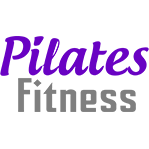30 Jan What is the cost of having a bad posture?
Is your posture good or bad?
Do you know that the Work Foundation estimates that employees suffering from bone and joint pain cost the EU’s economies 240bn euros (£200bn) each year?
Do you know that about 44 million workers in the EU have musculoskeletal disorders caused by their workplace?
Do you know that almost 31 million days of work were lost last year due to back, neck and muscle problems, according to the Office for National Statistics (ONS) in UK?
Do you know that a study by medical journal The Lancet, published in 2012, found that musculoskeletal conditions were the second greatest cause of disability in the world, affecting over 1.7 billion people worldwide?
According to Singapore Workplace Safety and Health (WSH) Institute survey conducted in 2008, it is estimated that work-related musculoskeletal disorders and other ergonomic problems result in an economic loss of $3.5 billion a year to Singapore. The cost to workers’ health and well-being is of course immeasurable because it affects not just him, but also his family. – Read more here.
The biggest cause of musculoskeletal disorders is putting your body in an awkward posture for an extended period of time.
Awkward posture puts unnecessary strain on your joints, inhibits mobility and creates muscle imbalances.
Putting the human body in an awkward position in the long run causes tension in neck, shoulders and lower back, resulting in a multitude of consequential issues such as tension migraines, frozen shoulders, slipped disc, scoliosis and more.
Do you have good posture?
A good posture is where your ear, shoulder, hip, knee and ankle are aligned in a single line on the side regardless of the position you are in.
For instance, if you are in a plank position, the same principle holds. When your posture is aligned correctly, you prevent unnecessary stress on your joints, allowing efficient and effective movement. Thus, Pilates Fitness instructors always ensures that every exercise is started in the correct position before we cue the movement. Starting the exercise in the wrong position makes it less likely to initiate movement using the right muscles, which causes a higher chance of injury.
At Pilates Fitness, the most common feedback we get from clients after the first class is that their nagging aches are gone. I am a realist – getting to the root of the problem is more important than treating the symptoms. Teaching the body to move while maintaining a correct posture is more sustainable than popping pain killers or buying gadgets in hope that your body will respond positively to them. The best way to correct your posture is to let the body experience how it feel like when moving with proper posture – trust me, the muscles will not forget.
I always recommend new clients to do as many classes as they can at the start. Most folks come daily in the first few months. This helps to train the muscle memory to move and function correctly. Thereafter, you can do 3 classes a week to maintain your fitness once your posture is corrected.
Source of statistics: BBC and MOM.
In June 2015, we are giving away a surprise gift for every 3 classes attended! An extra perk for keeping up with your fitness minutes.


No Comments